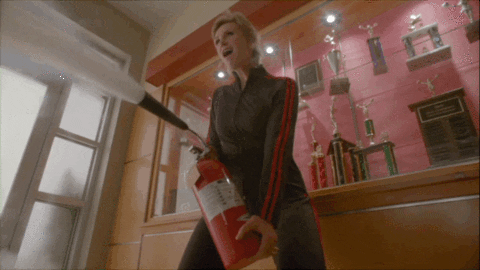No Products in the Cart
Brian Soo - 29 July 2020
Types of Fire Extinguishers

So you’re curious about fire extinguishers and may want to know what fire extinguishers are suitable for you. Let’s take a look at what’s available out there and understand which can be used for what.
Firstly, there are different classes/types of fires. Here’s a quick rundown:
Class A

Combustible Materials
(wood, paper and fabric)
Class B

Flammable Liquids
(Fuels, paint etc.)
Class C

Flammable Gasses
(Butane, Methane etc.)
Class D

Flammable Metals
(Lithium, Potassium and others)
Class E

All electrical
(Computers, USB Chargers and the like)
Class F

Cooking oil or fats
Now, after knowing the types of fires, let’s look at the types of extinguishing agents.
The versatile water

Literally the most basic, trusted and most available firefighting method is water. Extinguishers too have a water-filled type for specific use, but it is not suitable for all kinds of fires. On a commercial scale, water filled extinguishers look the same but are clearly labelled. It has a high-pressure canister inside that can be punctured to pressure the container. With this compression, you have a jet of water that can be squirted and directed at the fire. Just so you know, water type extinguishers are ONLY meant for wood, paper and fabric fires. Technically, this is a Class A fire extinguisher.
Tip for households, water is the WORST way to put off a cooking oil fire. Heck, it will make it even worse. Here’s a video to demonstrate that.
Foam the flames

For Class B fires, there is a specific extinguisher that has water as its base but with a foaming agent added. When activated, the foam is shot out to knock out flames and completely envelop it. This one-two action stops flammable vapors to rise (because of the heat) and catch fire again. It’s also handy for Class A fires. You’d only find it at commercial locations where easily combustible liquids are stored and sold. Usually, those working at these places are trained to use these extinguishers to not only stop fires but to prevent it from floating elsewhere. Yup, training is everything.
Powder-ful powder

The most versatile type of fire extinguisher by far. The ABC Dry Powder is a fine yellow powder with compressed nitrogen as the propellant. The ‘ABC’ in the name refers to the type of fires it can put off - Class A, B & C. What it is actually made of is the compound Monoammonium Phosphate(MAP). The effectiveness of an ABC Dry Powder Extinguisher is determined by the MAP content of the extinguisher. In Malaysia, the most common percentage is 40% MAP, which is in the 9kg ABC Dry Powder fire extinguishers.
Dry powder types will help you put out flames easily, but it has some drawbacks. Because of what it is, dry powder leaves residue where it is sprayed and can cause some damage on electrical equipment and fabric. It’s a small price to pay when you consider the potential damage fire has upon lives and belongings. So yes, it’s worth it considering the risks involved.
If you need a ABC Dry Powder fire extinguisher, check out our Online Store.
CO2 to the rescue
Fires need 3 things to survive - Oxygen, Heat & Fuel. By removing any 1 of this, it will kill the fire.
How a CO2 fire extinguisher works is that the CO2 fire extinguishers displaces oxygen from the area, starving it to death. In situations where fires are caused by anything powered by an electrical current or flammable liquids , these extinguishers put out fires in seconds. That’s not the end of the story though. It’s important to cut off the main power supply and in the case of liquids, follow up with another type to ensure no flare up. CO2 fire extinguishers are very heavy as it is compressed gas in a thick-walled cylinder. The best part about it is that it leaves no mess, perfect for electrical components.
Chef’s best friend

In commercial kitchens across the globe, you’d most likely find a Wet Chemical fire extinguisher either in an automatic discharging system or the typical cylinder types. It has one job to do and that is to extinguish fires of very high temperatures. Like the ones in kitchens where hot oils are aflame. Once released, its foamy discharge cools down the burning materials while effectively covering the surface to stop re-ignition of fires. Simultaneously, it stops the fire from spreading to wider areas and prevents anyone near the scene from being scalded. It’s neat properties in emergency situations stop further damage in the kitchen.
If you have any inquiries, just drop us a WhatsApp. If you need any fire extinguishers, check out our Online Store.



